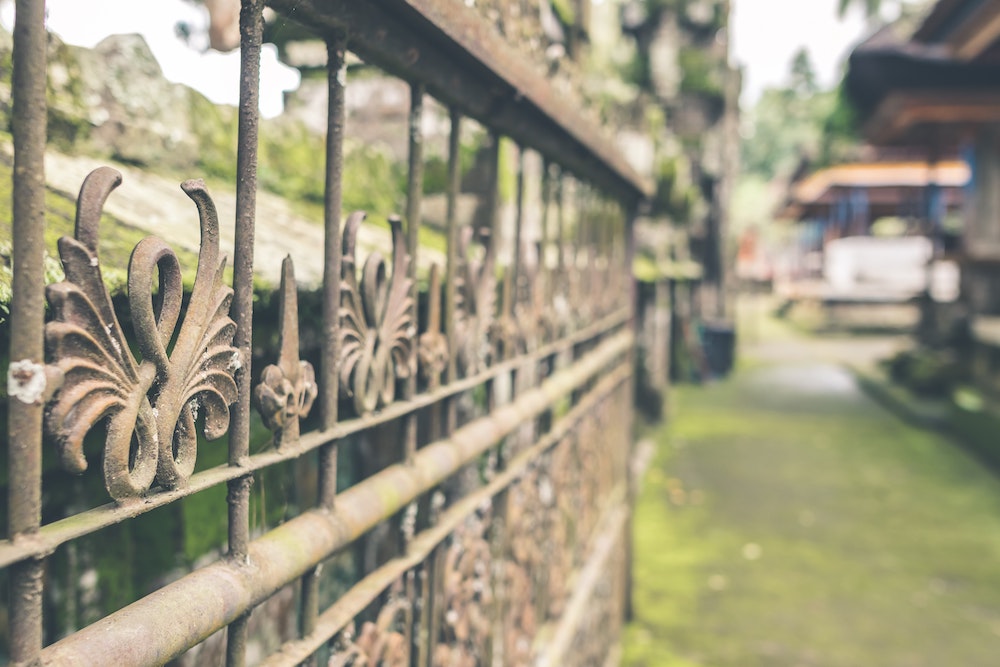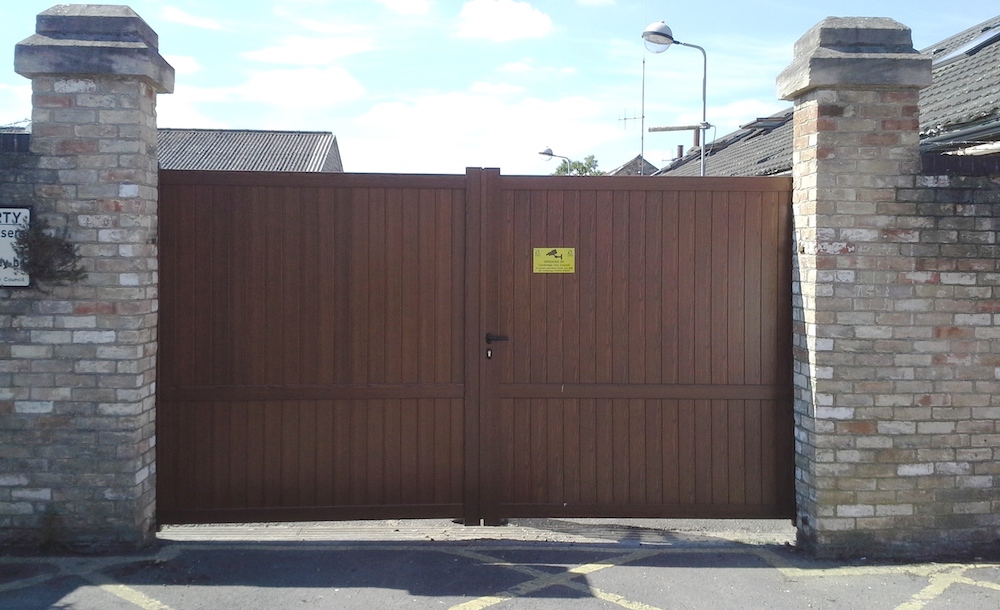-
Your shopping cart is empty!
Menu
Your shopping cart is empty!

Iron and steel are commonly used for the construction of driveway gates. While these are strong and robust materials, there are some features that can cause them to be less suitable than other alternative materials.
Iron is a ferrous metal that oxidises in the presence of water and oxygen to produce iron oxide (rust). Rust is brown, flaky and weak. This process slowly replaces the strong iron with weak iron oxide until, over a long period, all the iron has been oxidised. The reaction takes place when bare iron is exposed to oxygen and water and is accelerated when salt is added.
Steel is a harder form of iron, but it will still rust. Rusting is a slow process; it affects the exposed metal so can replace smooth surfaces with expanded, rough, surfaces that can affect the operation of hinges etc.
To prevent rust, iron and steel are coated with protective layers ranging from paint to powder coating and even galvanising. Paint leaves a strong layer of pigmented chemical on the surface once the solvent transport has evaporated. Specialist rust-treating paints can be applied directly to rusted surfaces (with loose flaking rust removed) and will chemically convert the rust to a stable surface.

Powder coating melts an electrostatically charged powdered chemical surface onto the metal and bakes it hard. Galvanising deposits zinc (which does not rust).
Rust significantly affects the appearance of gates and can also affect the movement if it occurs in the joints or hinges. In time, rust can also weaken the structural integrity of the gate.
Iron and steel will expand slightly when it is very hot and shrink when it is much colder. These are small changes but may affect the movement of hinges etc.
The general upkeep of an iron or steel gate system can be quite high. Appropriate paint must be applied to the surface regularly to maintain the barrier between the metal and the air.
There are a few things to consider when choosing the construction material for gates. The style of the gate will play a part in which material to use. Here are some alternative materials to use for a gate rather than iron or steel.
Wooden gates can add character to the exterior of a property. The diverse material can be carved or shaped into many different designs and styles to suit individual requirements.
Using a wooden gate is also beneficial to the environment because the process to create them requires far less energy and releases less CO2 compared to the production of iron or steel gates. For added environmental benefits, choose designs that are manufactured from FSC managed forests to ensure the timber is taken from sustainable sources.
Using aluminium for a gate system is perhaps the best option. The material is incredibly lightweight, and this can significantly reduce the forces acting on moving parts. The reduced weight also means that the motor can be less powerful which is safer and more cost-effective.
Aluminium is much more corrosion-resistant than iron or steel. It will oxidise very slowly, but the surface layer of aluminium oxide protects it from further oxidisation.
Aluminium gates can be designed and built in a wide variety of styles and painted in a range of colours. Aluminium gates can also be designed to closely mimic wooden gates but without all the issues.
Other materials require a high level of maintenance which can soon rack up costs. If poorly managed, iron and steel gates will require repairs or new sections requiring welding. Aluminium gates require far less upkeep and last much longer, so they can be a better investment in the long run.

LinkCare offers a wide range of automatic gate kits, gate motors, and other accessories. For more information or some guidance, call us on 01895 232626 or visit the contact us page and fill out the form.
These cookies are required for the website to run and cannot be switched off. Such cookie are only set in response to actions made by you such as language, currency, login session, privacy preferences. You can set your browser to block these cookies but our site may not work then.
These cookies are usually set by our marketing and advertising partners. They may be used by them to build a profile of your interest and later show you relevant ads. If you do not allow these cookies you will not experience targeted ads for your interests.
These cookies allow us to measure visitors traffic and see traffic sources by collecting information in data sets. They also help us understand which products and actions are more popular than others.



4 Comment(s)
Great read will be contacting you to get what i need for setting up an automatic gateway 500 yrds down my drive.
Great content! Are you able to contact www.vigates.com? We would love to partner with you to share referrals. Thanks!
It sure was helpful when you said that protective layers ranging from paint to powder coating and even galvanizing could be used for steel and iron gates to prevent rust. This reminds me of commercial property owners that aim to increase the security of their premises by installing a new gate. I could imagine how they could find a steel fabrication company that could efficiently install their needed gate within the timeframe set.
I'm delighted you told us that iron and steel should be covered with protective layers, such as paint, powder coating, and even galvanizing, to avoid rust. Our old wooden gates, which were destroyed by the storm the other day, will shortly be replaced with new iron ones, as I had planned. In searching for a contractor to engage for the installation of my iron railings, I'll be sure to keep this advice in mind.
Leave a Comment